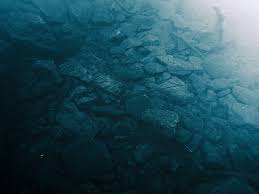Axial Seamount

- 02 Nov 2025
In News:
The Axial Seamount, an active underwater volcano located in the northeast Pacific Ocean off the coast of Oregon (USA), has shown increased seismic activity, prompting scientists to warn of a possible eruption in the near future. Despite the alert, experts emphasize that any eruption would pose no threat to coastal populations due to the volcano’s great depth.
Location & Geological Setting
- Located ~300 miles off the Oregon coast in the Pacific Ocean.
- Situated on the Juan de Fuca Ridge, a divergent boundary between the Pacific Plate and the Juan de Fuca Plate.
- Classified as a shield volcano with a summit caldera.
- Rises to a depth of approx. 1,400 m (≈4,900 ft) below sea level.
- Formed by a hotspot, where mantle plumes rise beneath the oceanic crust.
Scientific Importance
- Considered the most active submarine volcano in the northeast Pacific.
- Documented eruptions: 1998, 2011, 2015.
- The 2015 eruption triggered:
- ~8,000 earthquakes
- 400-ft-thick lava flows
- Seafloor subsidence of nearly 8 ft
Current Activity
- Recent USGS-recorded quakes of M4.8 and M5.4 occurred close to Axial Seamount.
- Over 2,000 micro-earthquakes in a single day were noted this year.
- Scientists expect the next eruption between late 2025 and early 2026, though the timing remains unpredictable.
- Surface uplift has been observed, matching levels seen prior to the 2015 eruption.
Hydrothermal Vent Ecosystem
- Hosts hydrothermal vents, releasing super-heated, mineral-rich fluids.
- Supports unique chemosynthetic ecosystems, including:
- Microbes using volcanic gases for energy
- Giant tubeworms
- Crabs, clams, fish, octopuses
- Provides a natural laboratory for studying extreme environments and deep-sea biodiversity.
Monitoring Infrastructure
- Part of the Ocean Observatories Initiative (OOI).
- Hosts the New Millennium Observatory (NeMO) — the world’s first underwater volcanic observatory.
- Real-time monitoring via undersea cables transmitting continuous data on:
- Seismic activity
- Gas emissions
- Vent temperatures
- Seafloor deformation
Hazards & Human Impact
- Despite increased activity, eruptions do not threaten humans or coastal infrastructure.
- Events occur deep underwater and may pass unnoticed at the surface.
- However, they are crucial for advancing scientific understanding of:
- Mid-ocean ridge volcanism
- Crustal formation
- Seafloor hydrothermal systems
